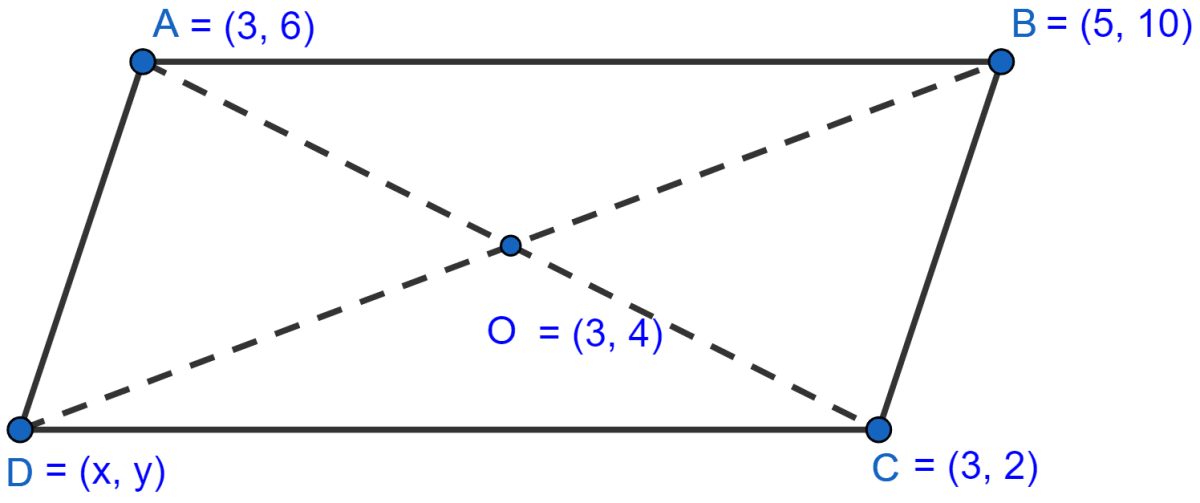Mathematics
Three vertices of a parallelogram ABCD taken in order are A(3, 6), B(5, 10) and C(3, 2) find :
(i) the coordinates of the fourth vertex D.
(ii) length of diagonal BD.
(iii) equation of side AB of the parallelogram ABCD.
Straight Line Eq
40 Likes
Answer
The parallelogram ABCD is shown in the figure below:

(i) We know that the diagonals of a parallelogram bisect each other. Let (x, y) be the coordinates of D.
Mid-point of diagonal AC = = (3, 4)
Mid-point of diagonal BD =
These two should be same. On equating we get,
Hence, coordinates of D are (1, -2).
(ii) By distance formula the distance between B(5, 10) and D(1, -2) is given by
2 - x1)^2 + (y2 - y1)^2}
Putting values we get BD,
Hence, the length of diagonal BD is units.
(iii) Equation of side AB can be given by two point formula i.e.,
1 = \dfrac{y2 - y1}{x2 - x1}(x - x1)
Putting values we get,
Answered By
23 Likes
Related Questions
Find the equation of the line passing through the point (1, 4) and intersecting the line x - 2y - 11 = 0 on the y-axis.
Find the equation of the straight line containing the point (3, 2) and making positive equal intercepts on axes.
A and B are the two points on the x-axis and y-axis respectively. P(2, -3) is the mid-point of AB.

Find :
(i) the coordinates of A and B.
(ii) the slope of the line AB.
(iii) the equation of the line AB.
M and N are two points on the x-axis and y-axis respectively. P(3, 2) divides the line segment MN in the ratio 2 : 3. Find :
(i) the coordinates of M and N.
(ii) slope of the line MN.